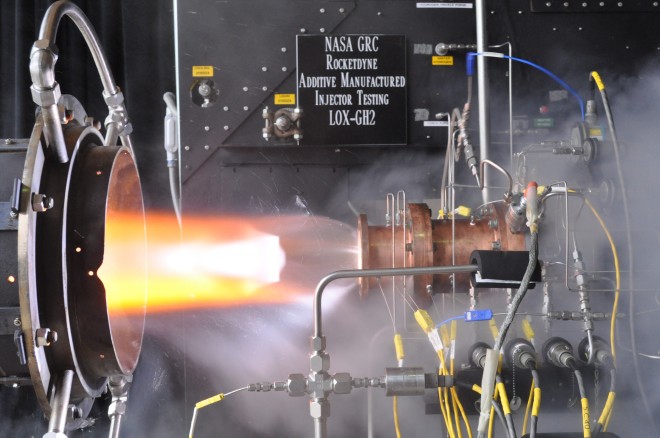I have two for this category. One is the advancement of 3D-printing or rapid prototyping in industry. The idea of 3D printing is to be able to create anything from one machine quicker and easier than any existing manufacturing technique. Eventually, there could be 3D printers big enough to create the whole structure of an airplane at once. Many companies are starting to use this new method of manufacturing, but it is difficult to implement when the old method is working just fine. It’s difficult for companies to spend a lot of money on startup expenses where they don’t see the benefit until 10-20 years down the line. One company that is leading in the implementation of 3D printing is GE Aviation. (GE must have a large budget for research currently.) For their newest engine, Leap, they are 3D printing all of their fuel nozzles, which are the nozzles that inject fuel into the combustion chamber of the engine. This took millions of dollars, but they took advantage of the fact that they were building a new engine and could start from scratch. Now, NASA is trying to completely 3D print a rocket engine. So far, they have successfully printed 75% of the rocket engine and completed testing.

Think about if we send a 3D printer to Mars, we could produce rocket parts or anything in case of a malfunction. This would save time and money from the alternative of trying to send more supplies to Mars from Earth. Of course, NASA has set this in motion by sending a 3D printer to the ISS, which again has already saved time and money which are the key factors in space exploration. There are definitely a lot of cool videos out there about 3D printing if you’d like to learn more.
The second thing I must include are the landing legs on SpaceX’s Falcon rocket. The landing legs are placed on the outside of the rocket in order to land the rocket safely on land or sea barge so that there is very little refurbishment necessary before its next launch. Along with developmental tests, SpaceX has been able to test these landing legs on real missions. The important part on missions is for the payload to reach its desired orbit, but the rocket itself can be replaced in case of failure.

These landing legs have to withstand incredible forces as the rocket lands. They are made of the best material probably possible: carbon fiber with aluminum honeycomb. Although they try to land at a relatively small velocity (for a rocket), it’s still a very large force and there isn’t an unlimited supply of fuel to correct for mishaps. Out of three attempts of landing a rocket on a barge, two have sort of landed, but then proceeded to fall over and blow up. The land attempt last December at Cape Canaveral Florida was successful, since it is clearly easier to land on a non-moving object. The three attempts on a barge have clearly improved if you look at the videos. The first slid at high velocity into the side of the barge, the second landed too quickly due to a faulty valve, and the third landed but a landing leg buckled causing the rocket to fall. SpaceX has a philosophy of test and test again. Since Elon Musk is a billionaire, he can afford to lose a rocket or two… Or five.

It’s nice to have billionaires around to fund the space industry, but it would also be nice if the space industry could survive without billionaires like Elon Musk and Richard Branson. I know very soon SpaceX will perfect the reusable rocket and be able to save millions on production to where the space industry can be self sustaining. Another billionaire, Jeff Bezos (Founder of Amazon/ CEO of Blue Origin) just recently landed the New Shepard rocket on land twice after reaching an altitude of 100km. Let the battle of the billionaires begin!
For your entertainment:
https://scratch.mit.edu/projects/76866912/
Kelly the Martian


